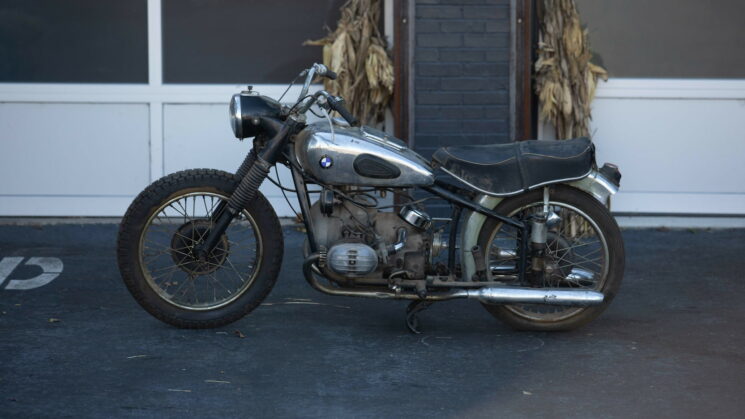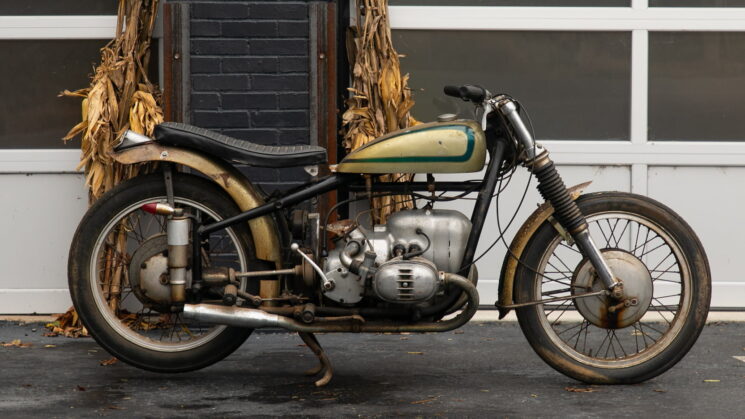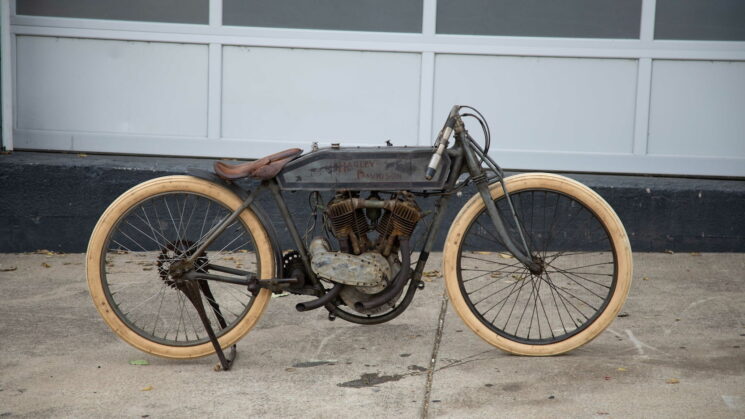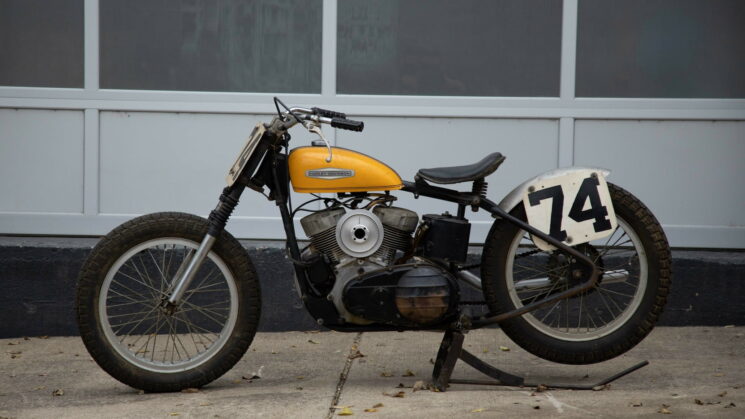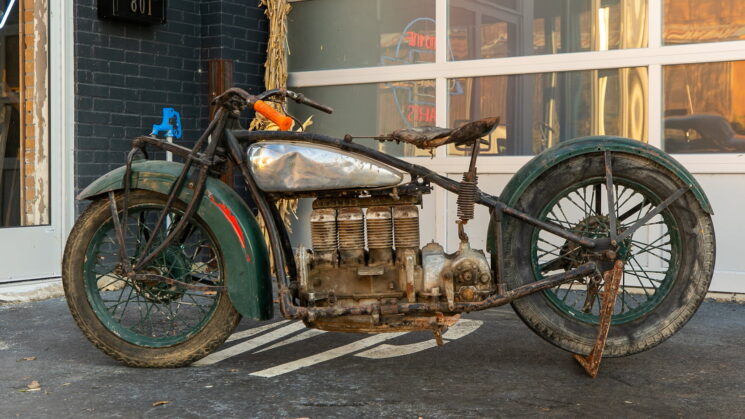Dream Big: A BMW R18 café racer by XTR Pepo and 911 MX

Here’s a custom motorcycle matchup we never expected: the wily custom bike builder, XTR Pepo, and the monstrous BMW R18. But the results are in, and they are jaw dropping.
We have 911 MX Factory to thank for this. They’re a new outfit out of Madrid, Spain, with a mission to design and build one-off customs—regardless of how outrageous the brief is. 911 MX Factory’s founder, Diego Mena, takes inspiration from Ferdinand Porsche’s famous saying; “I couldn’t find the sports car of my dreams, so I built it myself.”

There’s a context for that mantra. Diego worked for Porsche Spain for over a decade, and now plans to bring that same sense of exclusivity to the custom motorcycle scene. So he’s partnered up with top builders, like Pepo Rosell of XTR Pepo, to bring these dream machines to life.
For 911 MX Factory and XTR Pepo’s first collaboration, they radically transformed the BMW R18 to display it at the Motor Bike Expo in Verona. The event was held last weekend, and, unsurprisingly, the R18 was picked as the best custom bike of the show.

Like every bike that Pepo touches, the R18 looks fast standing still, with a livery that defies subtlety. In fact, the donor bike is hardly recognizable at all. But what’s truly impressive, is that Pepo, Diego and their team managed to pull this off in just three months.
As you’d imagine, there was a lot of tweaking to be done to convert the Beemer from cruiser to endurance-style café racer. Getting the stance right meant hacking off most of the rear part of the frame, and fabricating a svelte new subframe to sit up top. The crew also added a pair of frame struts for extra strength, running along either side of the engine.

Re-valved BMW R nineT forks do duty up front, while a custom-made YSS shock takes care of the rear ride height. The front wheel’s been lifted from a BMW F800R, and is fitted by way of a custom axle. Brembo front brakes are matched to the R18’s stock Nissin rear caliper, with upgraded stainless steel brake hoses installed at both ends.

There’s a lot going on between the wheels too. The engine’s shed its airbox cover, and now breathes via DNA pod filters. The front end of the engine block’s had some visual tweaking too, and an upgraded oil cooler sits lower down.
The exhaust is particularly intoxicating. It’s a hand-built two-into-one affair that runs around the motor and pokes out on the right hand side. A custom muffler from Spark caps it off, along with a neat carbon fiber heat shield.

The ‘Polizei’ graphic on the green fuel tank is an obvious nod to German police-issue BMWs… but the tank itself comes from an unlikely source. It’s off a modern Moto Guzzi V7, tweaked to match the R18’s frame and fitted with an endurance-style filler cap. An inspired choice by Diego and Pepo.
As for the fairing and chunky tail piece, those were hand-shaped out of fiberglass. The front fender’s a modified BMW F800R part, and the small rear fender is a carbon fiber item.

Behind the fairing you’ll find a custom bracket that also houses the OEM speedo. Clever little clutch and brake reservoir mounts double up as blank-off plates for the original riser mounts, while clip-ons replace the R18’s original handlebars. Rear-set foot pegs round out the controls, along with a bespoke gear shift linkage system.
Complementing the green tank are splashes of red and yellow, creating an effect that’s a little German, a little Italian, a little Spanish and wholly awesome.

911 MX Factory and XTR Pepo’s creation is not only our new favorite R18 custom, but it’s a fitting testament to the new shop’s motto; “If your dream motorcycle does not exist, we’ll make it happen.”
911 MX Factory | XTR Pepo

Continue reading...

Here’s a custom motorcycle matchup we never expected: the wily custom bike builder, XTR Pepo, and the monstrous BMW R18. But the results are in, and they are jaw dropping.
We have 911 MX Factory to thank for this. They’re a new outfit out of Madrid, Spain, with a mission to design and build one-off customs—regardless of how outrageous the brief is. 911 MX Factory’s founder, Diego Mena, takes inspiration from Ferdinand Porsche’s famous saying; “I couldn’t find the sports car of my dreams, so I built it myself.”

There’s a context for that mantra. Diego worked for Porsche Spain for over a decade, and now plans to bring that same sense of exclusivity to the custom motorcycle scene. So he’s partnered up with top builders, like Pepo Rosell of XTR Pepo, to bring these dream machines to life.
For 911 MX Factory and XTR Pepo’s first collaboration, they radically transformed the BMW R18 to display it at the Motor Bike Expo in Verona. The event was held last weekend, and, unsurprisingly, the R18 was picked as the best custom bike of the show.

Like every bike that Pepo touches, the R18 looks fast standing still, with a livery that defies subtlety. In fact, the donor bike is hardly recognizable at all. But what’s truly impressive, is that Pepo, Diego and their team managed to pull this off in just three months.
As you’d imagine, there was a lot of tweaking to be done to convert the Beemer from cruiser to endurance-style café racer. Getting the stance right meant hacking off most of the rear part of the frame, and fabricating a svelte new subframe to sit up top. The crew also added a pair of frame struts for extra strength, running along either side of the engine.

Re-valved BMW R nineT forks do duty up front, while a custom-made YSS shock takes care of the rear ride height. The front wheel’s been lifted from a BMW F800R, and is fitted by way of a custom axle. Brembo front brakes are matched to the R18’s stock Nissin rear caliper, with upgraded stainless steel brake hoses installed at both ends.

There’s a lot going on between the wheels too. The engine’s shed its airbox cover, and now breathes via DNA pod filters. The front end of the engine block’s had some visual tweaking too, and an upgraded oil cooler sits lower down.
The exhaust is particularly intoxicating. It’s a hand-built two-into-one affair that runs around the motor and pokes out on the right hand side. A custom muffler from Spark caps it off, along with a neat carbon fiber heat shield.

The ‘Polizei’ graphic on the green fuel tank is an obvious nod to German police-issue BMWs… but the tank itself comes from an unlikely source. It’s off a modern Moto Guzzi V7, tweaked to match the R18’s frame and fitted with an endurance-style filler cap. An inspired choice by Diego and Pepo.
As for the fairing and chunky tail piece, those were hand-shaped out of fiberglass. The front fender’s a modified BMW F800R part, and the small rear fender is a carbon fiber item.

Behind the fairing you’ll find a custom bracket that also houses the OEM speedo. Clever little clutch and brake reservoir mounts double up as blank-off plates for the original riser mounts, while clip-ons replace the R18’s original handlebars. Rear-set foot pegs round out the controls, along with a bespoke gear shift linkage system.
Complementing the green tank are splashes of red and yellow, creating an effect that’s a little German, a little Italian, a little Spanish and wholly awesome.

911 MX Factory and XTR Pepo’s creation is not only our new favorite R18 custom, but it’s a fitting testament to the new shop’s motto; “If your dream motorcycle does not exist, we’ll make it happen.”
911 MX Factory | XTR Pepo

Continue reading...










